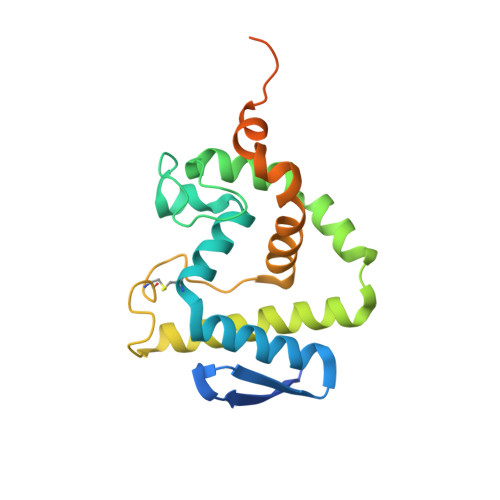Engineering quorum quenching acylases with improved kinetic and biochemical properties.
Sompiyachoke, K., Elias, M.H.(2024) Protein Sci 33: e4954-e4954
- PubMed: 38520282
- DOI: https://doi.org/10.1002/pro.4954
- Primary Citation of Related Structures:
8SO5 - PubMed Abstract:
Many Gram-negative bacteria use N-acyl-L-homoserine lactone (AHL) signals to coordinate phenotypes such as biofilm formation and virulence factor production. Quorum-quenching enzymes, such as AHL acylases, chemically degrade these molecules which prevents signal reception by bacteria and inhibits undesirable biofilm-related traits. These capabilities make acylases appealing candidates for controlling microbes, yet candidates with high activity levels and substrate specificity and that are capable of being formulated into materials are needed. In this work, we undertook engineering efforts against two AHL acylases, PvdQ and MacQ, to generate these improved properties using the Protein One-Stop Shop Server. The engineering of acylases is complicated by low-throughput enzymatic assays. Alleviating this challenge, we report a time-course kinetic assay for AHL acylases that monitors the real-time production of homoserine lactone. Using the assay, we identified variants of PvdQ that were significantly stabilized, with melting point increases of up to 13.2°C, which translated into high resistance against organic solvents and increased compatibility with material coatings. While the MacQ mutants were unexpectedly destabilized, they had considerably improved kinetic properties, with >10-fold increases against N-butyryl-L-homoserine lactone and N-hexanoyl-L-homoserine lactone. Accordingly, these changes resulted in increased quenching abilities using a biosensor model and greater inhibition of virulence factor production of Pseudomonas aeruginosa PA14. While the crystal structure of one of the MacQ variants, M1, did not reveal obvious structural determinants explaining the observed changes in kinetics, it allowed for the capture of an acyl-enzyme intermediate that confirms a previously hypothesized catalytic mechanism of AHL acylases.
Organizational Affiliation:
Department of Biochemistry, Molecular Biology and Biophysics, University of Minnesota, St. Paul, Minnesota, USA.
















